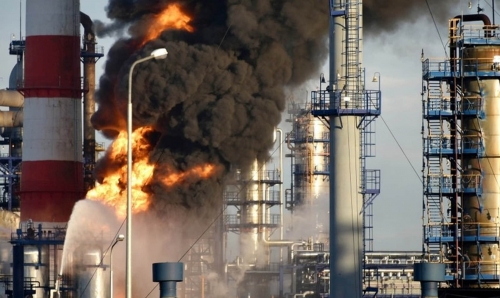Kazakhstan plans a deep cut to its crude output in May and June in order to fulfil its commitments under a deal struck between major global oil producers last year, Kazakh Energy Minister Kanat Bozumbayev has said.
OPEC and non-OPEC members pledged in December to cut their combined production by almost 1.8 million bpd in the first six months of the year. For its part, Kazakhstan promised to maintain an average output of 1.68 million bpd during the period, 20,000 bpd lower than its yield in November last year.
Initially, Kazakhstan exceeded its reduction quota, cutting production to 1.67 million bpd in January, according to government data. However, output then bounced back to 1.72 million bpd in February and 1.75 million bpd in March. Astana’s failure to meet its commitments is largely owing to the relaunch in late October of the massive Kashagan oilfield.
According to Bozumbayev, however, the government now intends to offset higher yields earlier in the year with dramatic cuts in May and June.
“In April, the situation will be little changed; in May we expect to significantly reduce production and also to decrease [output] in June,” Bozumbayev told Interfax this week. “A lot depends on the Karachaganak, Tengiz and Kashagan fields.”
All three deposits are operated by consortia of international companies, and therefore Astana may be unable to influence their production schedules over the coming months. In the past, Bozumbayev has ruled out making any cuts at these fields, suggesting that Kazakhstan would instead meet its quota by curbing production at mature fields in the west of the country.
The minister noted to Interfax that output typically fell in Kazakhstan during the warmer months of the year, adding that the government had factored in this seasonal effect when drawing up its plans to implement cuts. “In the summer from June to August, production is typically reduced significantly … we took these factors into account when we made our decision,” he explained. “Kazakhstan will try to fulfil its obligations.”
The landmark deal between global oil producers reached in December was aimed at buoying oil prices, which have remained bearish for over two years and a half. In a market report last month, the IEA recorded 98% compliance with the deal among members of OPEC during the first two months of the year. This compared with just 37% for the 11 non-OPEC states that had also pledged to rein in production.
Astana’s reluctance to curb output is understandable. The country is forecast to raise its liquids production by 3.8% to 81 million tonnes (1.63 million bpd) in 2017, after reporting several years of decline. Kashagan is chiefly responsible for Kazakhstan’s change in fortunes. The massive deposit yielded 170,000 bpd of oil in February and its operators have suggested that an output of 370,000 bpd could be achieved as early as the end of the year.
Kazakh officials were notably absent from a meeting held in Kuwait in late March to discuss a possible six-month extension to the deal on reducing output after it expires on July 1.
Kazakhstan pledges to abide by output cut deal
2017.04.22
1 282

%20(1).png)



